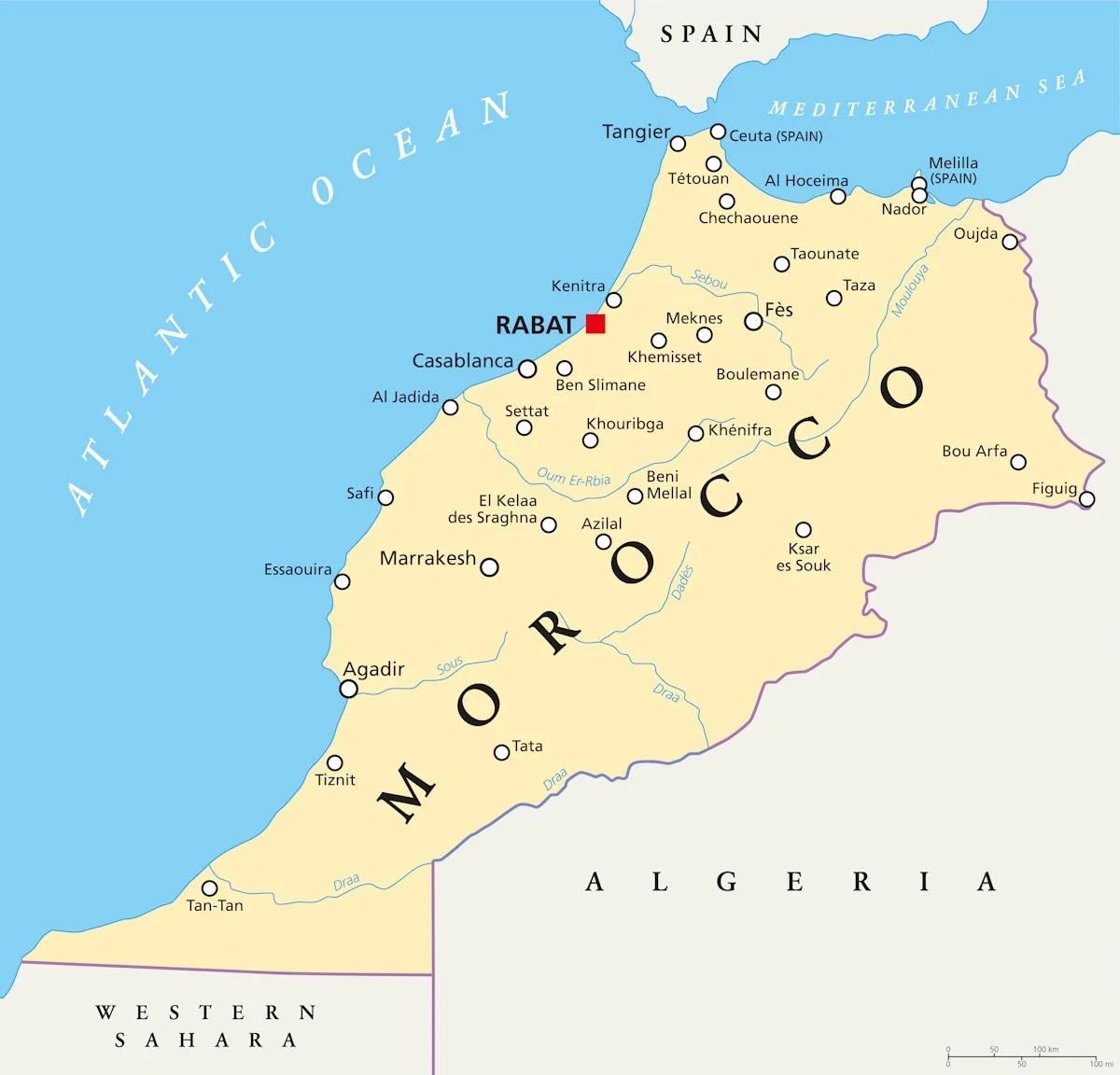November 18: Independence Day in Morocco
Prayer Idea
Pray for the people and government of Morocco.
Map by Peter Hermes Furian / Shutterstock.com.
History Note
The Imazighen (also known as Amazigh or Berbers) were the ancient inhabitants of North Africa, including what became Morocco. During the Roman period, many of them converted to Judaism or Christianity. After the establishment of Islam, Arabs brought that religion to the area. The Arabs also crossed the narrow Strait of Gibraltar into Spain and took over much of the Iberian peninsula. Spain and Morocco have had significant interaction over the centuries.
During the Middle Ages, Morocco resisted being absorbed by either a European empire or the Ottoman Empire. The Alawi family took control in the 1600s, and their descendants have ruled Morocco ever since.
In the 19th century, as European countries took over other parts of Africa, Morocco faced increasing pressure. Morocco became a French protectorate in 1912, but the French left the ruling family on the throne. Spain continued to be involved in Moroccan affairs, too.
As Moroccan soldiers fought for France during World War II, a move for full independence grew. The French exiled the sultan in 1953 but allowed him to return on November 18, 1955. In 1956 Morocco reached agreements with France and Spain to reclaim the country’s independence. Morocco chose to observe November 18 as Independence Day.
Morocco is a parliamentary constitutional monarchy with a population of 37 million. Nearly all of the people are ethnically Arab or Imazighen. Islam is the official religion, though there are small minorities of Christians and Jews. Arabic and Tamazight are the official languages, though French is still commonly used.
Goats in Morocco have an interdependent relationship with argan trees. The goats climb up into the trees to eat the trees’ fruit. They then spit out the seeds. Photo by Muhammad Shiraaz Carrim / Shutterstock.com.
Learn More
Enjoy a brief video about Morocco’s Independence Day.
Find more resources at Homeschool History.

